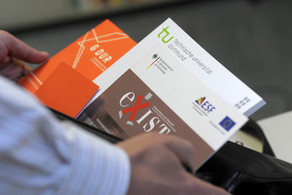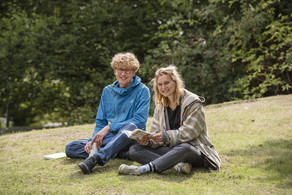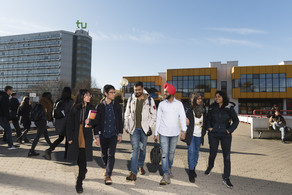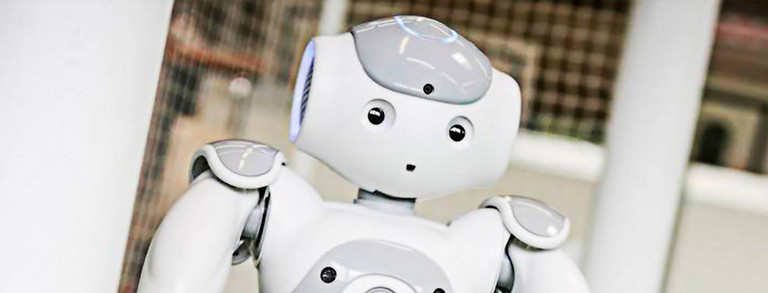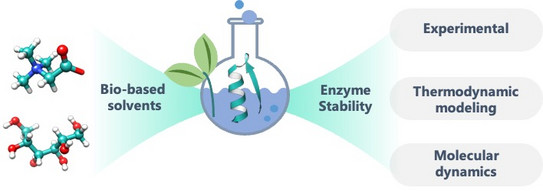Solvation research between Chile and the Ruhr area
- mundo
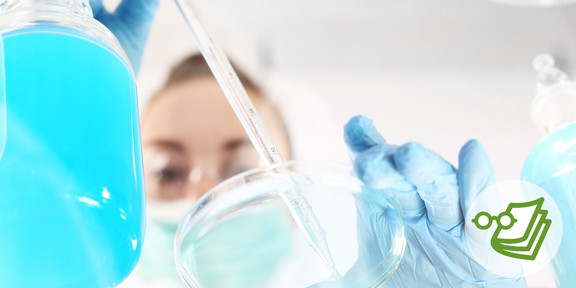
Biocatalysts control chemical reactions. However, how effective the reaction is also depends on the environment in which the reaction takes place – the solvent. Prof. Gabriele Sadowski, Dr. Christoph Held and Nicolás Gajardo from the Department of Biochemical and Chemical Engineering are investigating how solvent effects can make the industrial use of biocatalysis more efficient as part of the internationally active RESOLV Cluster of Excellence.
Working in an internationally active Cluster of Excellence is something special. Nicolás Gajardo is a chemical engineer and is completing his doctorate at the Department of Biochemical and Chemical Engineering at TU Dortmund University as part of the RESOLV Cluster of Excellence – a joint project involving many researchers from TU Dortmund University. RESOLV attracts scientists from all over the world who come from a variety of disciplines, including physics, chemistry or biochemistry. “When I came to Germany from Chile to do my doctorate, I was well-versed in the field of chemical thermodynamics. However, I didn't know much about enzymes but needed the knowledge for my project. So the interdisciplinary environment was very important for me,” says Gajardo. In general, he values the interaction with the other researchers: “If I need support – with an experiment, for example – there are always scientists at RESOLV who can help me.”
At the Department of Biochemical and Chemical Engineering, Gajardo is a researcher in the “Bioreactions and Biothermodynamics” working group led by Dr. Christoph Held. Alongside other RESOLV members, Gajardo studies chemical reactions that occur with the help of biocatalysts. Catalysts reduce the activation energy and ensure that substances react with one other with less energy input or that a reaction takes place at all. In biocatalysis, this task is mainly performed by enzymes – complex biological molecules that also accelerate chemical reactions in nature.
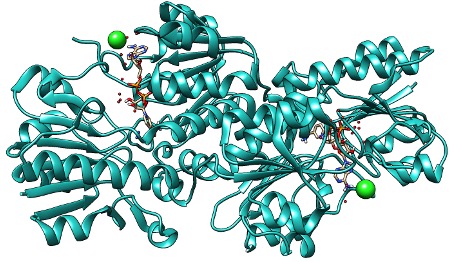
There is a certain enzyme that Gajardo is particularly interested in – with the complicated name of Candida boidinii formate dehydrogenase – that can convert formic acid and NAD+ into carbon dioxide and the key cofactor NADH. The reaction works in both directions. It can be used both to obtain NADH, which is key to the production of fine chemicals and medicines, and to bind carbon dioxide, which is produced during combustion processes, for example. The problem with this is that the enzyme is not stable enough at higher temperatures, and the reaction is too slow. Both have prevented any industrial application as of yet. “We are therefore looking into how the reaction can be optimized,” says Gajardo. For example, in nature, this happens through osmolytes – soluble substances that are part of the reaction mixture and impact the stability of the enzyme and the speed and yield of the reaction.
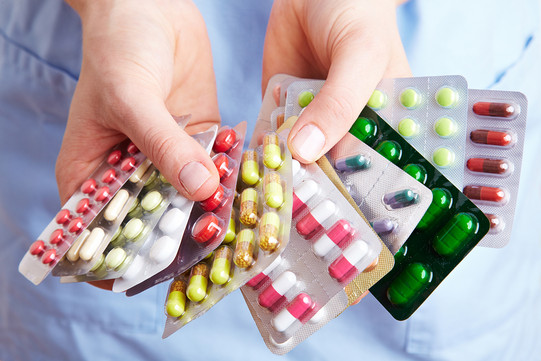
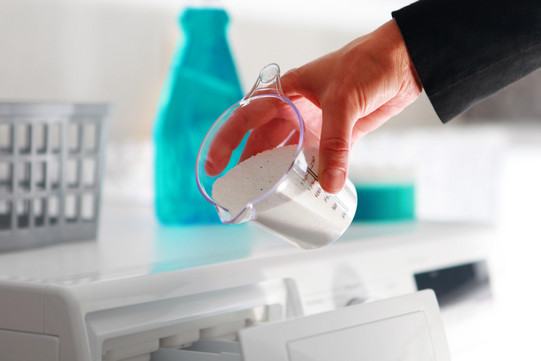
“Solvent effects of this kind play a major role in biocatalysis,” says Held. In nature, biocatalysis usually takes place in water. However, researchers have known for some time that the solvent influences how well the starting materials are converted. Chemical reactions eventually reach an equilibrium, after which the starting materials are no longer converted into end products.
“Let’s assume that 50 percent of a starting material is converted in water. It is now possible for a different solvent to change the chemical equilibrium in such a way that 70 percent of the starting material is converted, and the reaction also occurs faster," says Held. “We are researching the effects of using other solvents or adding other substances to the original solvent – for instance, how this changes the chemical equilibrium, the reaction rate or the stability of the enzyme.”
Tailoring solvents
To do this, the researchers are developing thermodynamic models that describe how the biocatalyzed reactions occur. They then conduct experiments to check whether the model works. Working on an exclusively experimental basis would be extremely time-consuming and costly, says Held: “A suitable model can be expanded to include different solvents or solvent mixtures. This allows us to develop tailor-made solvents: We can not only optimize the chemical reaction – we can also, for example, find solvents that are particularly cheap or particularly environmentally friendly.”
The RESOLV Cluster of Excellence has been researching solvent-dependent processes since 2012. RESOLV stands for “Ruhr Explores Solvation”: Approximately 200 members from six research institutions in the Ruhr area are working on this joint project. The federal government and the state of North Rhine-Westphalia are supporting RESOLV as part of their Excellence Strategy. “Many crucial chemical and biochemical reactions occur in the liquid phase, especially biocatalytic reactions. The RESOLV Cluster of Excellence demonstrates just how important research is in this field. Our aim is to make a contribution to this,” says Prof. Gabriele Sadowski. She is Professor of Thermodynamics at the Department of Biochemical and Chemical Engineering and Principal Investigator at RESOLV, i.e. one of the key scientists in the cluster.
We can not only optimize the chemical reaction – we can also, for example, find solvents that are particularly cheap or particularly environmentally friendly.
Dr. Christoph Held
The Dortmund working group "Bioreactions and Biothermodynamics" is affiliated with the RESOLV research area "Solvation under extreme conditions". “For biocatalysis, even a solvent that isn’t water is an extreme condition. We also look at how pressure or temperature impact chemical reactions. Nature also shows us how biocatalysis can work under these conditions: Bacteria and other organisms manage to survive in deep sea or in volcanic craters,” says Held. Gajardo, Held, Sadowski, and others are trying to imitate such natural mechanisms and make them usable for industry.
In the RESOLV consortium, international researchers collaborate at different levels. 32 of the 81 doctoral candidates come from abroad. And among those who already have a doctoral degree, the figure is as high as 22 out of 26. “The international milieu was very supportive, especially at the beginning,” Gajardo recalls. He came to Dortmund in 2020 – at the height of the pandemic. "It wasn't easy. The laboratory was subject to strict guidelines and could only be used by a few people. This meant I had to take my research in a more theoretical direction. Both the working group here in Dortmund and the other researchers in RESOLV made coming to Germany a bit easier for me.”
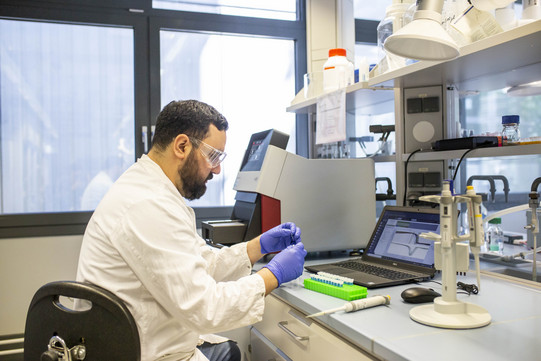
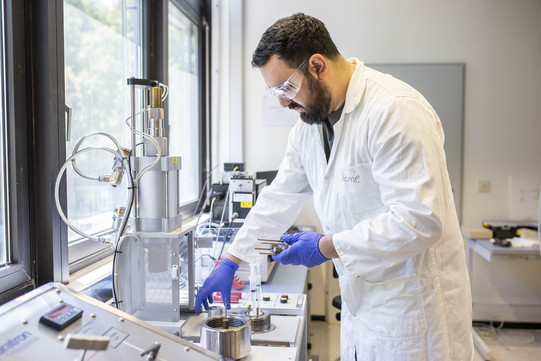
The first time I met with Held and Sadowski was around winter 2019: “I was still studying in Santiago de Chile at the time. The supervisor for my master's thesis was previously a postdoctoral researcher at RESOLV and gave me an internship with Christoph Held. A year later, Christoph sent me the job vacancy,” says Gajardo. For his doctorate at the RESOLV Graduate School, Gajardo is receiving a scholarship from the German Academic Exchange Service (DAAD). He has maintained his academic ties with Chile – and now supports doctoral students from Chile himself.
International partnerships with over 20 institutes
“A project like RESOLV attracts the best scientists from all over the world, making it an effective disseminator for our research,” says Sadowski. RESOLV also has international partnerships with over 20 institutes working in the field of solvation research. “This makes it possible for us to build a network with other scientists – in the form of conferences or research stays, for example. These kinds of networks are very valuable,” says Held. Gajardo and the other doctoral students also learn how to present themselves well on the international stage at the RESOLV Graduate School – the training program includes such things as lectures at workshops and conferences as well as a research internship abroad.
RESOLV is currently being supported by the Excellence Strategy for a second funding period: The cluster is set to receive 41.7 million euros between 2019 and 2025. Sadowski also sees potential beyond this: “Thanks to RESOLV, we have a deep understanding of the role solvents play in chemical reactions. These findings are relevant for industry – for instance, they help when it comes to reusing carbon dioxide for the production of chemicals or converting and storing energy more efficiently.”
Text: Hanna Metzen
About:
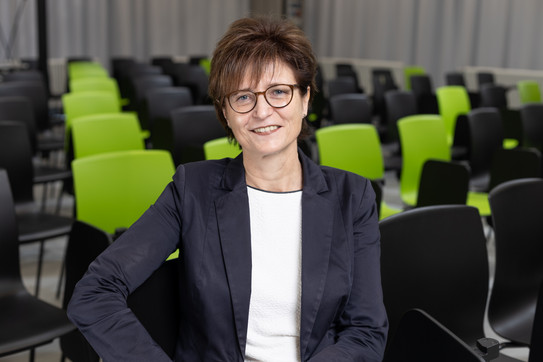
Prof. Dr. Gabriele Sadowski has been a professor of thermodynamics at the Department of Biochemical and Chemical Engineering since 2001. Sadowski studied chemistry at the Technical University Leuna-Merseburg, where she also received her doctorate in 1991. In 1992, she became a research assistant at TU Berlin, where she completed her postdoctoral lecture qualification in 2000, before joining TU Dortmund University a year later. For her research achievements, Prof. Sadowski was awarded the Gottfried Wilhelm Leibniz Prize in 2011, Germany’s most highly endowed research prize. She has been researching in the RESOLV Cluster of Excellence since 2012. She is also the initiator and spokesperson for the new CALEDO research building, which is currently under construction at TU Dortmund University. In 2022, she was appointed to the German Science and Humanities Council.
Dr. Christoph Held has been an Senior Assistant Professor at Department of Biochemical and Chemical Engineering since 2018. He studied chemical engineering at TU Dortmund University, where he also earned his doctorate in the field of thermodynamics in 2011. For his dissertation, he received the European EFCE Excellence Award in Thermodynamics and Transport Properties. He has been leading the “Bioreactions and Biothermodynamics” working group since 2012. He completed his postdoctoral lecture qualification in 2017. In 2018, he was awarded the Arnold Eucken Prize for process engineering. He researches the thermodynamics of biochemical reactive systems, particularly the thermodynamics of enzymatically catalyzed reactions, the phase separation of complex media and the thermodynamic properties of complex biological mixtures.
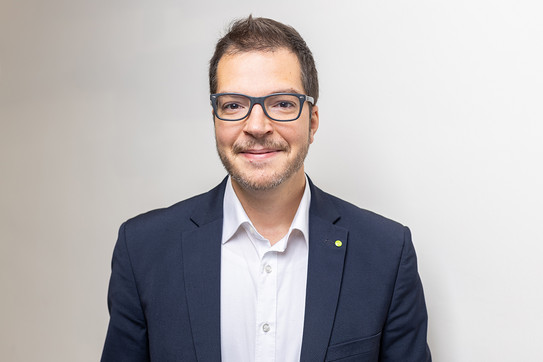
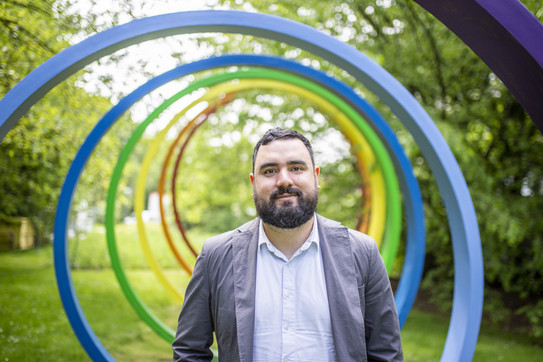
Nicolás Gajardo-Parra has been a doctoral student at the Department of Biochemical and Chemical Engineering since 2020. He studied chemical engineering at Pontificia Universidad Católica de Chile and graduated with a Master of Science in 2018. He received a scholarship from the German Academic Exchange Service (DAAD) for his doctorate in the Graduate School of the RESOLV Cluster of Excellence. His research interests include enzymatically catalyzed reactions, tailored solvents and molecular dynamic simulations.
Dies ist ein Beitrag aus der mundo, dem Forschungsmagazin der TU Dortmund.


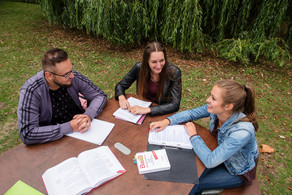
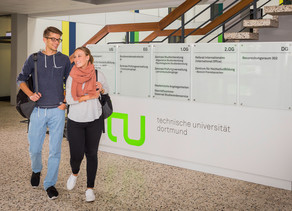
![[Translate to English:] Partner Four hands are holding the green logo of TU Dortmund University](/storages/tu_website/_processed_/1/d/csm_Partner_Nicole_Rechmann_KW_40b35bb3fd.jpg)
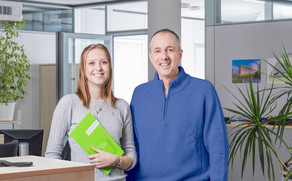
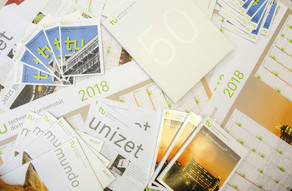

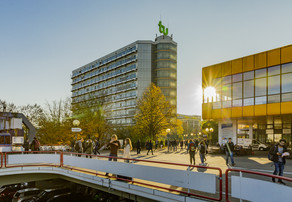
![[Translate to English:] Forschung An apparatus with tubes in a laboratory](/storages/tu_website/_processed_/0/c/csm_Forschung_Juergen_Huhn_cbd34afd6d.jpg)
![[Translate to English:] Studium Five students are sitting in a lecture hall. They are talking to each other.](/storages/tu_website/_processed_/c/9/csm_Studium_FelixSchmale_81d94adc86.jpg)
